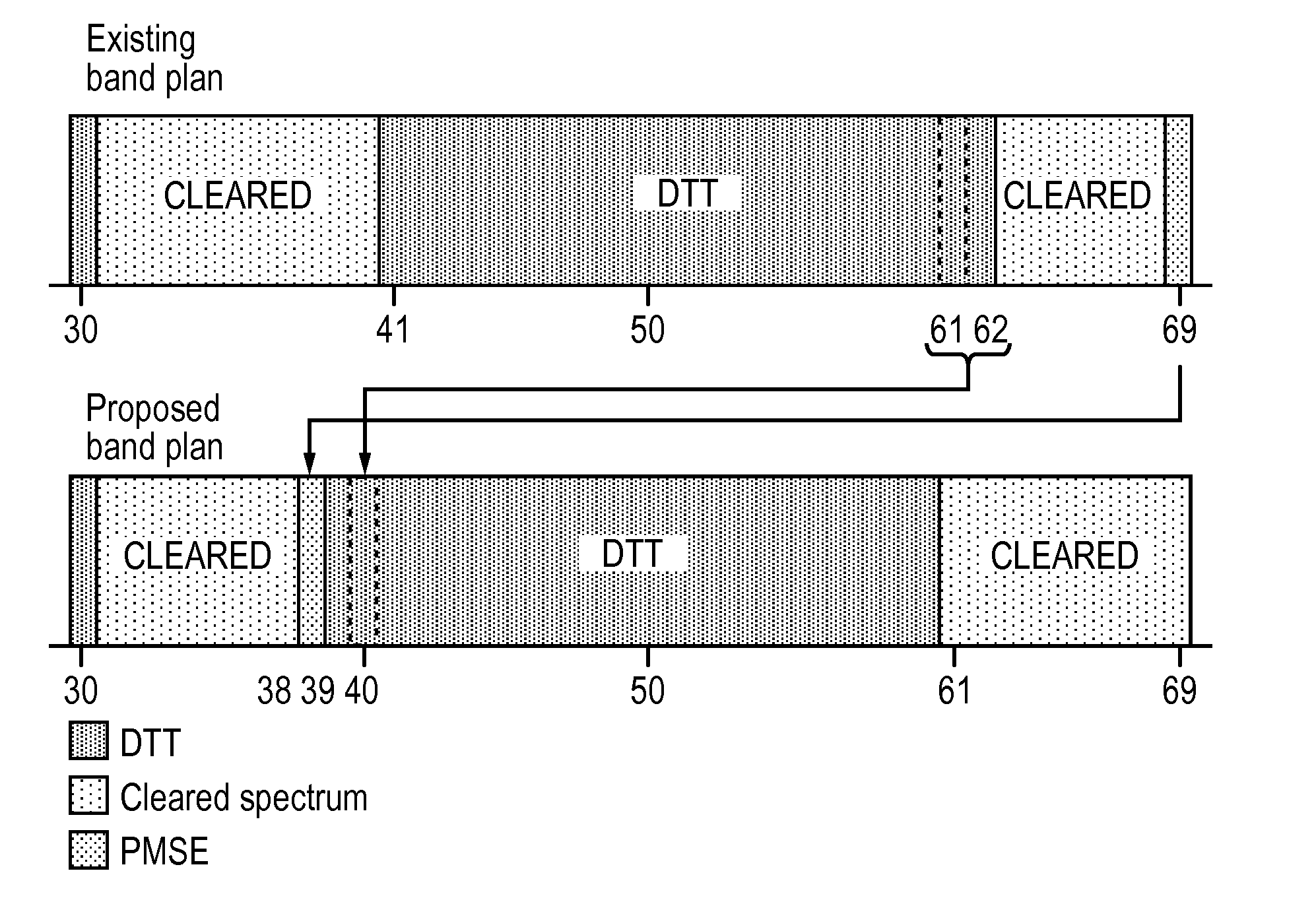LTE frequency channel avoidance
- Summary
- Abstract
- Description
- Claims
- Application Information
AI Technical Summary
Benefits of technology
Problems solved by technology
Method used
Image
Examples
Embodiment Construction
[0033]FIG. 1 shows a table of frequency channels which are currently allocated in the UK for the broadcast of terrestrial television signals. As discussed above, after 2012 channels 61 to 68 are to be reallocated to other uses which may include mobile communication services such as the proposed Long Term Evolution (LTE) fourth generation mobile communication system. The remaining channels, i.e. channels 39 to 60, are expected to remain reserved for television broadcast. However, due to the fact that the frequencies associated with channels 53 to 60 are adjacent in the frequency spectrum to the frequencies associated with channels 61 to 68, it is possible that use of channels 61 to 68 for LTE communications will interfere with the reception of television content broadcast on channels 53 to 60. This is explained further with reference to FIG. 2.
[0034]FIG. 2 shows a schematic diagram illustrating various parts of a conventional television 1, which includes a receiver 2. For clarity, va...
PUM
 Login to View More
Login to View More Abstract
Description
Claims
Application Information
 Login to View More
Login to View More - R&D
- Intellectual Property
- Life Sciences
- Materials
- Tech Scout
- Unparalleled Data Quality
- Higher Quality Content
- 60% Fewer Hallucinations
Browse by: Latest US Patents, China's latest patents, Technical Efficacy Thesaurus, Application Domain, Technology Topic, Popular Technical Reports.
© 2025 PatSnap. All rights reserved.Legal|Privacy policy|Modern Slavery Act Transparency Statement|Sitemap|About US| Contact US: help@patsnap.com



